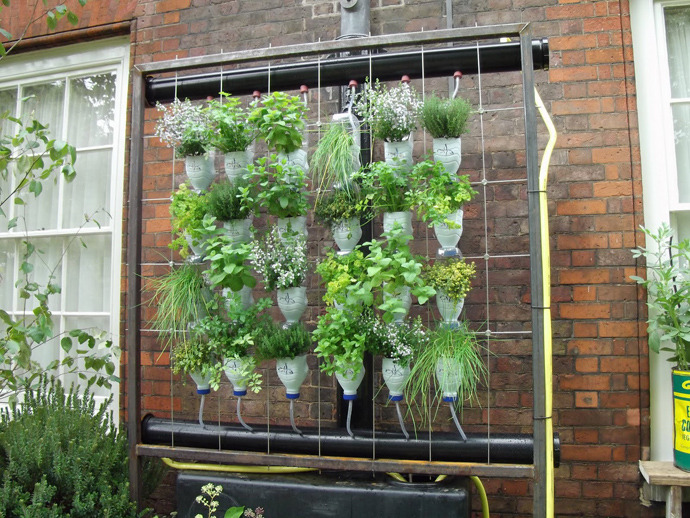I'm just as guilty as the next person at grabbing onto fads, but coconut water has a hold on me now and I am curious to know more about it as an agricultural product and dietary supplement.
 |
| Figure 1: Relative composition of ionic constituents of coconut water, intracellular fluids, and sea water |
Some time ago, I did a bit of research into
salts. I was wondering if it were better to take a bath in Epsom salts or sea salt. I learned that not all salts cross the skin barrier equally, and neither sea salt nor Epsom salts (MgSO
4) are a particularly good source of potassium (
Figure 1). Hence my interest in coconut water. No need for ions to cross the skin's barrier if they are to be ingested. Coconut water has also been used as an IV fluid for re-hydration (in remote regions) and a growth-promoting component in tissue culture medium.
What concerns me is the large fraction of calcium needed in a human body. Without a source of calcium, how is our body to operate? A ballet teacher recommended a
water-soluble calcium magnesium supplement which I have tried. I have tried every horrible calcium supplement in an effort to preempt osteoporosis before age 25, but this remedy seems to complement recovery via coconut water. I dissolve one teaspoon of liquid calcium-magnesium (chalky white and vanilla flavored) in a glass of orange or cherry juice. I tried it in other drinks and it was kind of yucky. But in black currant juice, it's spectacular.
 |
| Figure 2: Comparison of sodium and potassium balance in sports drinks vs. coconut water |
I worry about giving the body so much supplementation that bad things start to happen. What if you start causing an imbalance? Precipitation occurs. I guess that's why ratios are so important. I've been using a recipe for some long-distance events that utilizes
sea salt, I call it Astronaut Juice. But definitely coconut water adds a dose of needed potassium (
Figure 2) if that is particularly lacking. I would say though that the calcium-magnesium supplement also should be added to more holistically reflect the needs of the human body, which requires a large percentage of calcium. I guess the question is: which of these ions are lost in sweat and which are involved in the formation of kidney stones? Which are a danger in excess? Are any of these involved in feelings of health and well-being?
I'm also concerned about the transportation costs and packaging associated with coconut water. I can understand using it as a recovery (or survival) drink if it is abundant in your country (Malaysia, Indonesia, Philippines), but the continental USA as far as I know is devoid of coconut trees. The great thing about the Astronaut Juice is that you can make it at home, in your reusable container, eliminating the energy needed for harvest, storage, preservation, packaging, and transportation. You could substitute honey for the sugar, and you could consider adding MCTs (coconut oil) to simulate the drink yourself. I haven't tried this, but it's definitely an idea for the future.
 |
| Figure 3: Comparison of sugar composition of coconut water vs. sports drinks |
Not discussed in this article heretofore are micronurients such as manganese (Mn), iron (Fe), zinc (Zn), and B vitamins: thiamine (B1), riboflavin (B2), niacin (B3), pantothenic acid (B5), pyridoxamine (B6), biotin (B7), and folate (B9). Coconut water provides these in amounts equivalent to 0.1-1.0 ppm. This is why they're called micronutrients, as cofactors in enzymatic reactions they are necessary but only in low abundance. This is in contrast with macronutrients such as sugars, which are present in quantitites between 60-25,000 ppm. Also it is important to address the sugars (Figure 3) which you can see are comparable to sports drinks used in research (see Davis, et al.) at least. This data is not taken from any commercially available brand(s), so I can't say which brand of coconut water or which brand of sports drink this data accurately reflects, it's more of an average of what is out on the market (or studied in the lab).
Works Cited:
Yong, J. W. H.; Ge, L.; and Tan, S. N. Molecules 2009, 14, 5144-5164.
Davis, J. M.; Lamb, D. R.; Pate, R. R.; Slentz, C. A.; Burgess, W. A.; Bartoli, W. P. Am. J. Clin. Nutr. 1988, 48, 1023-1030.
Bogdanov, S.; Jurendic, T.; Sieber, R.; Gallmann, P. J. Am. Coll. Nutr. 2008, 27, 677-689.




